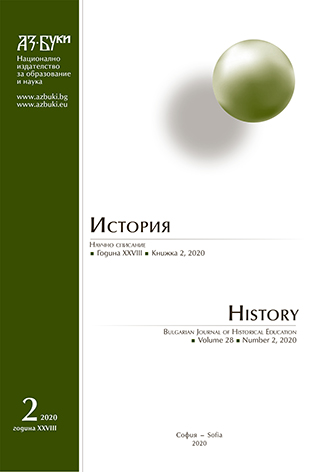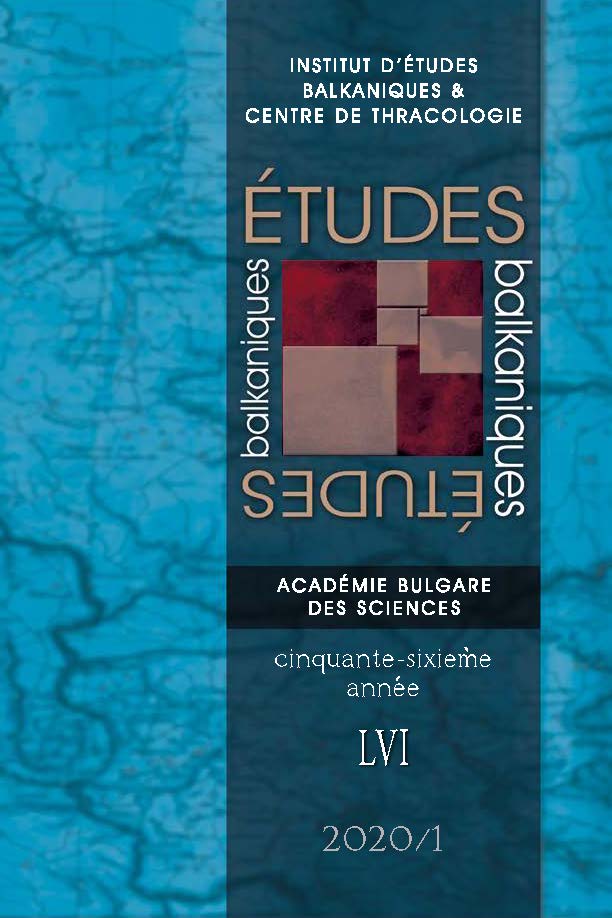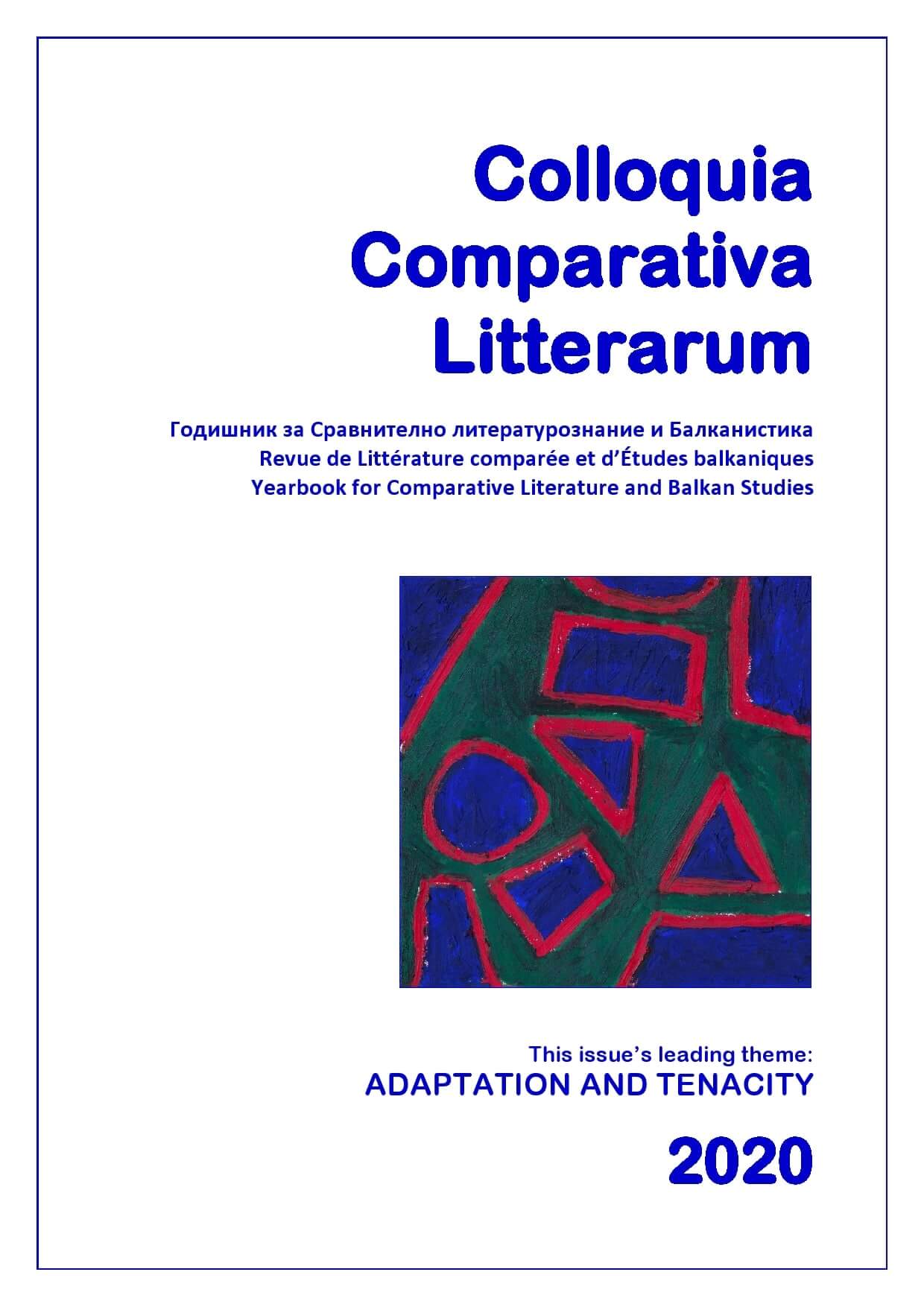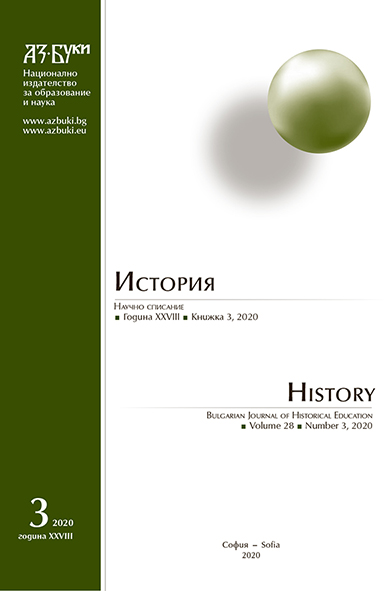
We kindly inform you that, as long as the subject affiliation of our 300.000+ articles is in progress, you might get unsufficient or no results on your third level or second level search. In this case, please broaden your search criteria.


The paper presents the extant copies of the four books, prepared by Petar Bogdan for publishing: 1. The book in so-called Illyrian under the titel [in translation: Meditationes S. Bonaventurae, id est theophilic meditations on the mystery of the redemption of mankind, by St. Bonaventura, translated to Illyrian by Petăr Bogdan Bakšič, custos of Bulgaria and belonging to the Order of Friars Minor Observants of St. Francis]. Rome, 1638. 2. The appendix to the book is a poem on the two deaths of man, meant to be published separately. 3. The book in so-called Illyrian under the titel [in translation: “The celestial treasure of Virgin Mary, the Mother of God, translated by Petăr Bogdan Bakšič, a monk belonging to the Franciscan Order of Friars Minor, archbishop of Sardica or Sofia]. The book was published in 1643 in Rome. The fourth book prepared by the author for publication is known only in manuscript. It is a treatise written in Latin and entitled De antiquitate Paterni soli, et de rebus Bulgaricis [On the antiquity of the fatherland and on the deeds of the Bulgarians]. The manuscript is kept in Estense Library in Modena (Italy).
More...
The report examines poorly known testimonies of Dobrudzha and its ethnic characteristics, collected by the Hungarian ethnographer Györfi István (1916). They correspond to the trend in the then Hungarian science of exploring „related Turan peoples“. Today they can be considered as a beginning of a more targeted and systematic knowledge of Hungarian society about the Bulgarian province. These publications are a good basis for forming certain ideas about the Bulgarian territories and for enhancing their research interest.
More...
Abstract: The purpose of this text is to present several exemples of the Bulgarian history that reveal the role of the Greek language in the transfer of knowledge concerning economic life and its importance for the modernization processes of the eighteenth and nineteenth centuries. I comment on the use of Greek as a vehicle for knowledge in the field of commerce and I retrace the penetration of double-entry bookkeeping and the knowledge in commercial epistolography and geography, closely linked to commercial activities. The analysis of the correspondence of Bulgarian merchants of the 19th century reveals the current use of this language in trade, even after the cooling of relations between Bulgarians and Greeks during the second half of the 19th century due to the incompatibility of their national programs.
More...
Dang Huy Tru (At Dau 1825 – Giap Tuat 1874) is not only a writer, poet, economist, and politician but also one of the first thinkers of “germination of civilization in Vietnam”. His ideas in many fields are quite rich and distinctive, and self-reliance and autonomy are among the core thoughts. Due to some subjective and objective conditions, such ideas have not become a reality in Viet Nam. However, if the limitations of historical conditions are filtered out, his ideas may be useful historical lessons for the current reform of the country.
More...
Bogdan Filov (1883–1945) was a Bulgarian archeologist and politician, who studied in Freiburg, Germany. In 1914 he became professor in Sofia, in 1929 – member of the Bulgarian Academy of Sciences. In the years 1938–1940 he was Minister of Education, from 1940 till 1943 he was Prime Minister of Bulgaria. After the unexpected death of king Boris III Filov became one of the three members of the Bulgarian regency instead of Boris´ minor son Simeon. Because of the coalition with Germany during World War II Filov was overthrown in September 1944 after the invasion of Soviet troops and executed by a Popular Court of justice. The scientific researches of Bogdan Filiov in the fields of Bulgarian archeology and history of art were acknowledged not only in Bulgaria, but also in Germany by his election as a foreign member of the academies in Berlin, Göttingen and Munich.
More...
The paper is dedicated to the history of translation of Sophocles’ seminal tragedy Oedipus the King in Bulgaria. It studies the different strategies of translation that have been adopted by Bulgarian authors, when rendering the Greek word τύχη in contemporary Bulgarian language. In comparing the various translational versions of a short passage from the 3rd epeisodion, and having in mind the translators’ background and decisions, the paper argues that the instance of Oedipus the King is indicative of the productive power of translation. The comparison shows how displacements and shifting of meaning in the process of translation could bring about new, unexpected effects of meaning. This situation is also brought about by the specific way of reception of Ancient literature in Bulgaria, since not all of the translators have used the original in their work.
More...
The word “monastirya” is not just a dialect variant, meaning a place (an old place), relative to the knowledge of a monastery that existed or still exists. It has a generalizing emotionally-assessing aspect, regarding the place and the function of the religious Christian monastery in the local memory. The stress in it is the statement that these are monasteries from the age of the Bulgarian kingdom.The topos “monastirya” dynamically produces the process of the ethnic and religious identification and self-identification on the grounds of a particular cult. In this same sense, there is also a variant of designation not only of Christianity. Even places, related to the Islam and most often – tekkes – are also referred to as monasteries. The cult has specific dynamics in time and grows with numerous legends and traditions. They motivate its vitality in the past by the particular character of its realization in sites that have really existed and which, in many cases, have been obliterated in the real space. Nevertheless, even today they still have their place and vitality namely as knowledge.The information that has been preserved and the local knowledge about the Little Sliven Holy Mountain confirm the place and function of the topos “monastirya” in the cultural space. Today, it is the vitality of this knowledge that lies at the root of re-creation of sites which have once existed.
More...
The article comments the semantics and the functions of Thracian metal engravings in the collection of the Regional History Museum – Sliven, acquired predominantly throughout the study of some rich graves in the region of Sliven. Marriage is a form of transition from a particular social status to a different one. Through the marriage the hero joins the goddess and turns into a god-man – the highest position in society which is available only for the king. From ideological point of view wedding is a form of choosing of the ruler by the god. The ritual burial of female objects might be interpreted as a sacred symbolic signifier of a marriage between the diseased ruler and the Great Goddess. Its meaning implies the new birth of the ruler after his death. The elements of the opposition birth-death in the mythological consciousness are equal as elements of the general structure of the rites of birth, marriage, death. This is necessary in providing the main eschatological reason for the existence of the tomb as a cult building – to secure a new birth of the deceased ruler in the outer world.
More...
Sharing heritage is an important process in society, where a narrative makes transmission and turns in a vehicle for the understanding of both past and present. The text presents the contemporary practices of object oriented museology. Using the exhibits with history in Russe Museum, an exposition and museum educational module are produced. On the basis of the principles of the co-participatory museum, a dialogical environment is built in which the artefacts are not only witnesses of time, but also an inspiration for creativity. Russe Museum explores the relationship between cultural heritage and local development with the participation of the Museum as an environment for communication between different social actors, local communities and shared knowledge. In this process object oriented museology gives the possibility to re-conceptualize the ways of change of the approaches connected to communication through heritage. In its core stays the active public, which is part of the local community.
More...


During the twentieth century, the male dance verbunk in the village of Kóny, initially performed in traditional lad societies as part of the local heritage, became a staged attraction. Between the two world wars, the Kóny verbunk was performed in the village as a representation practice of the lad societies and, as such, besides maintaining the group identity, served to indicate the spatial segregation and social differences within the local community. The decade after the Second World War brought the socio-economic transformation of local society in line with national processes. The relational network on which lad societies had been based was suppressed. In the first half of the 1950s, along with the persisting practice of the lad guilds, the verbunk became increasingly a staged spectacle for the community. At the same time, it should not be ignored that, under the supervision of the local authorities, the phenomenon shifted from the framework of church holidays to the field of political celebrations.
More...
The article analyses the UNESCO 2003 Convention for the Safeguarding of Intangible Cultural Heritage and the basic documents related to it with a view of analyzing of the content of the notion of community within these documents. The author finds the lack of a stable definition of community and at the same time outlines its basic characteristics as they are present in the mentioned above documents.
More...
The article represents the folklore groups created in the second half of the 20th century. They allow for the local village tradition (preserved as a living practice of its bearers) to enter the local chitalishte. The analysis of the filed-work research in the villages of Bistritsa (Sofia City Municipality) and Alino (Samokov Region) reveals different aspects of the relation between chitalishte institution and intangible cultural heritage in the changing social and cultural contexts, as well as in relation to the changing cultural policies. Thus the article offers an anthropological point of view to the transmission of traditional knowledge, skills and experience in chitalishte environment.
More...
Poprelka in the village of Breznitsa, Gotse Delchev Region is an event deeply related to the tradition as far as its model and content are concerned, but at the same time it represents the contemporary condition of the local culture. This is the place for the performance of the well-preserved, “living” traditional musical folklore in the natural environment. The article is an attempt to typologize the intonational models of women two-part singing in Breznitsa, which is interesting because of the still existing specifics of the ancient musical thinking in the present. The scholarly research on which the article is based was provoked by fieldwork observation allowing for the accumulation of detailed knowledge about the processes of development and change thus functioning as a key to the understanding of the immanent specifics of the traditional Bulgarian culture.
More...
The article examines the Bulgarian political and ethnic presence in Thessaly during the Middle Ages. Thessaly is part of the early medieval Bulgarian Tsardom for short periods yet this helps to establish Bulgarian ethnic consciousness among part of Slavic population in the area. There are data in various sources for Bulgarians in Thessaly in the 11th – 15th centuries, who participate in local riots and internecine struggles.
More...
Read in the Latest Issues of “Az-Buki“ Journals
More...
The Roma people joined the general migratory flows a bit later than the other ethnic groups; however, the mobility patterns and routes do not differ significantly compared to those of the rest of the population. For the Roma communities, this is one of the few opportunities for employment. For the present, the financial transfers help break the vicious circle of unemployment – poverty – lack of education in the sending communities, which circle many families have entered. Along with better financial security, migrants bring back new ideas and knowledge which stimulate social development in the encapsulated neighbourhoods. The crossing of the physical borders symbolically destroys the mental boundaries of the communities. The stress is put on the opening to the world which creates opportunities but leads to two main risks: complete dependency on labour mobility and loss of human capital(brain drain) in the Roma communities; this could hinder the processes of social development at a later stage.
More...
The article is dedicated to an episode of the cultural relations between Bulgaria and Poland immediately after the First World War. This was the time when their political and ruling elites realized that the two Slavic states would not receive the diplomatic support of the great powers and their neighbors to realize their national ideals. That was why they united around the concept of informal - scientific, personal and collective – contacts as a way to get to know each other and draw closer. This idea was carried out through the exchange of two delegations. On September 5, 1923, a Bulgarian cultural and educational group left Sofia for Poland. Among its members was Dr. Boris Vazov – chairman of „Slavyanska Beseda“, a prestigious journalist and public figure who was committed to sending daily articles covering the trip. In them he dwells on important events in Polish history, life, culture, economy and psychology of the Polish people, shares impressions of the patriotic feelings of Poles and their respect for the heroes who played an important role in national preservation.
More...